Run-12 Transverse Jets: First Look (All Runs)
Kevin has observed significant non-zero Collins asymmetries in the Run-12 data. It is useful to verify this with an independent analysis. Here, I parallel what he did, looking at Collins asymmetries for the following:
- events
- Kevin's 488 "good" runs (NOTE: it turns out, I allowed 54 extra runs to slip through. This should explain the slightly smaller uncertainties I see when compared to Kevin's)
- Bunch-crossing ID outside the abort gaps (30-38 and 110-118, note these are shifted one from the typical due to a "slip" in the counter for Run-12)
- Good spin-4 bit
- Vertex rank > 0 and |z| < 60 cm.
- Jets
- Geometric matching to JP0, JP1, JP2, or AJP trigger or VPDMB/VPDMB-nobsmd "did fire"
- No charged-particles with pT > 30 GeV/c
- RT < 0.95
- ∑pT,ch > 0.5 GeV/c
- |ηdet - 0.1| < 0.8
- |ηjet| < 1
- 5 < pT,jet < 55 GeV/c
- Pions
- ΔR > 0.1
- -1 < nσ(π) < 2.5
- Nhits,dE/dx > 5
For the Collins analysis, I focus on jets with pT > 9.9 GeV/c. For Collins-like I focus on the range pT < 9.9 GeV/c.
I note some differences from Kevin's analysis. First, I do include a geometric trigger match. Second, I consider vertices below 106 but above 0. These, I believe, are single-track vertices. My detector-η cut is a bit different. I also have a slightly-tighter nσ(π) cut. I do not cut on the total Nhits (that is above the nominal 12 hits), but rather on Nhits, dE/dx. I chose 9.9 GeV/c rather than a flat 10 GeV/c as it correlates with the binning I use for the pT-dependence.
For polarization correction, Kevin takes the event-weighted average of the polarization and divides from the raw asymmetries. Here, I adopt the same approach I used for the Run-11 analysis. I calculate the weighted-average of the various triggers, detector halves, etc., on a fill-by-fill basis. I use the polarization values from the CNI Polarimetry page.
Collins Asymmetries
Figure 1
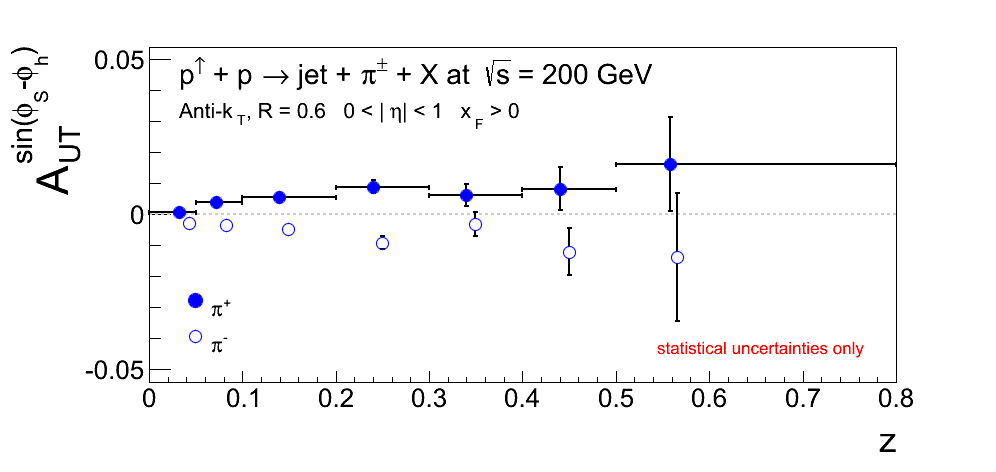
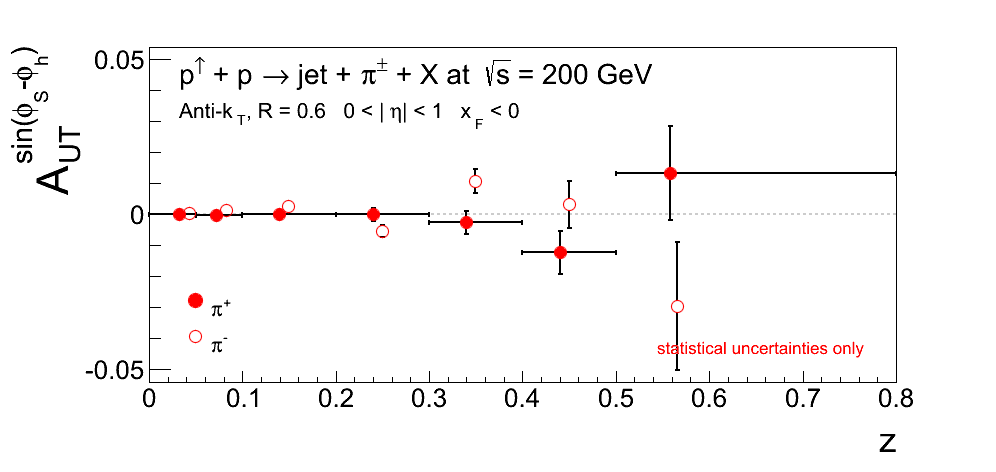
It is quite clear there are charge-dependent Collins asymmetries for forward scattering. The effects are muted for backward scattering, which is consistent with the expectation for damped polarization-transfer at backward angles. This is qualitatively consistent with Kevin's parallel analysis.
It does appear the asymmetries, here, are larger than what Kevin sees. For a constant fit I find
for π+
**************************************** Minimizer is Linear Chi2 = 22.5218 NDf = 6 p0 = 0.00376381 +/- 0.000505535
for π-
**************************************** Minimizer is Linear Chi2 = 10.5762 NDf = 6 p0 = -0.00394722 +/- 0.000514243
So, the constant fits are not great. The statistical uncertainties are about 9% larger than Kevin's. The asymmetries appear to be larger, as well, by a factor of 4.8 in π+ and 1.7 in π-. On the other hand, the constant fits are constistent with asymmetries of equal-magnitude and opposite charge-sign for π+ and π-. For linear fits through the origin I find
for π+
**************************************** Minimizer is Linear Chi2 = 7.04447 NDf = 5 p0 = 0 (fixed) p1 = 0.0356633 +/- 0.00423519
for π-
**************************************** Minimizer is Linear Chi2 = 8.46514 NDf = 5 p0 = 0 (fixed) p1 = -0.0322351 +/- 0.0041263
The fits are not bad (both better than 1.6σ). The linear dependences are, again, perfectly consistent in magnitude and opposite in sign. Moreover, the significance is tremendous, ~8σ.
Figure 2
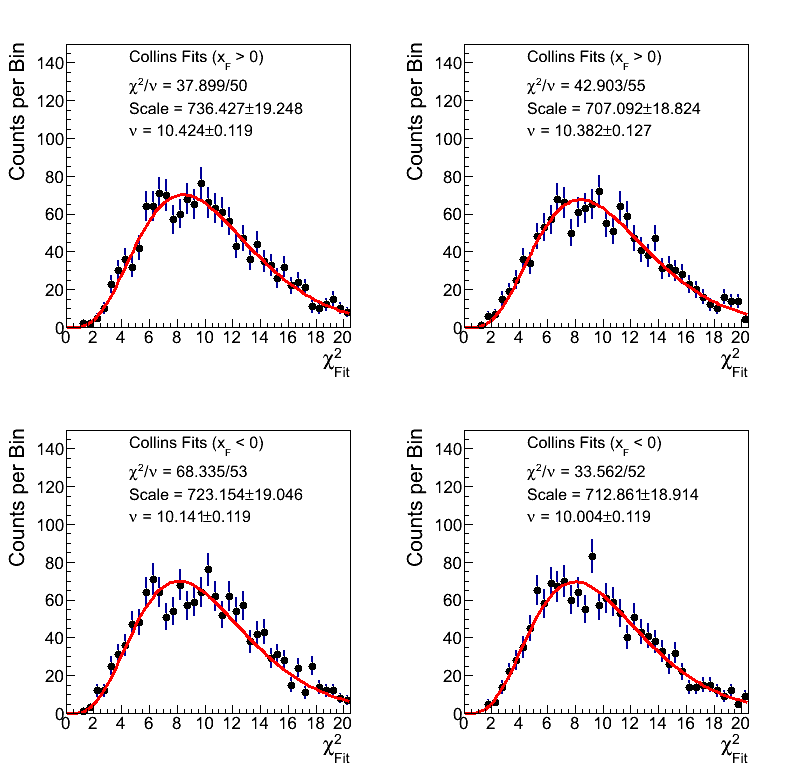
In Fig. 2 I show the χ2 distribution for the Collins fits. There do appear to be statistically significant (~3.6σ and ~3.0σ) shifts to higher ν for xF > 0. So, it is possible there are some hidden systematics present.
Figure 3
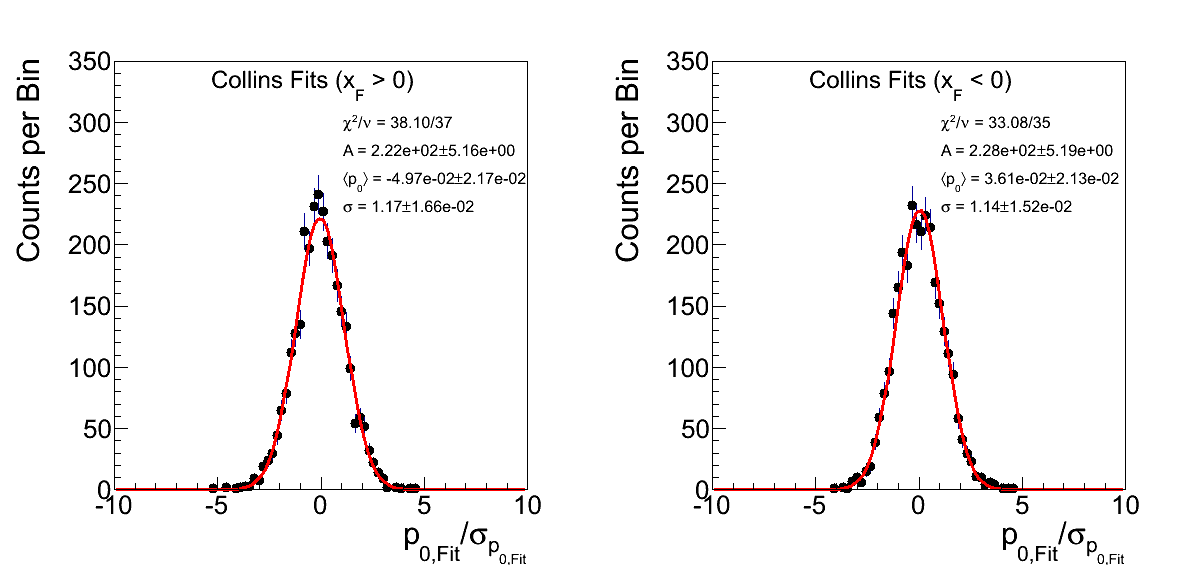
In Fig. 3 I post the p0 residual distribution, assuming a null result. The residual distribution appears to be centered reasonably close to zero (within 2.3σ). However, the width of the distribution is ~10σ from 1. The raw width of the distribution is wide by about 15%.
Figure 4
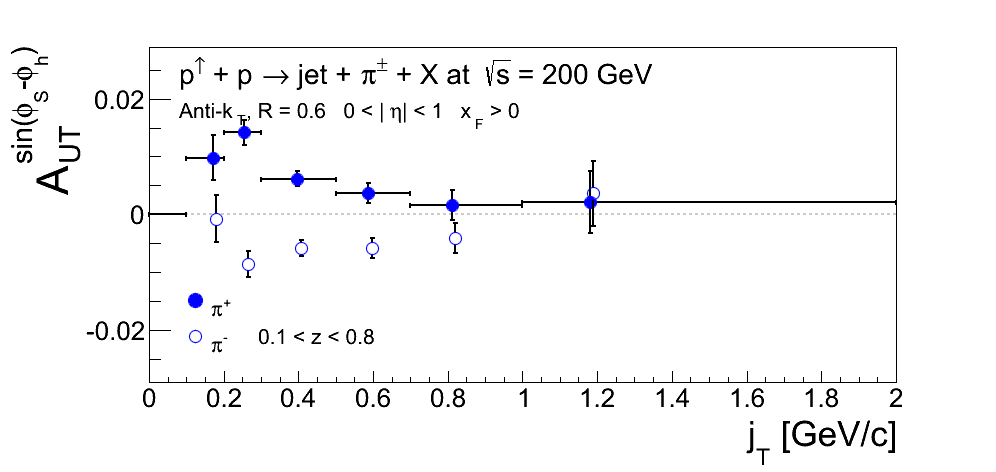
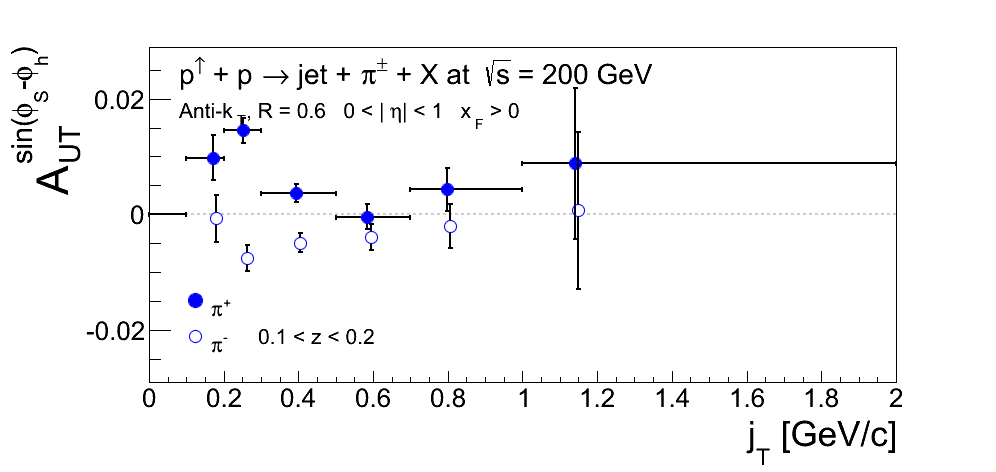
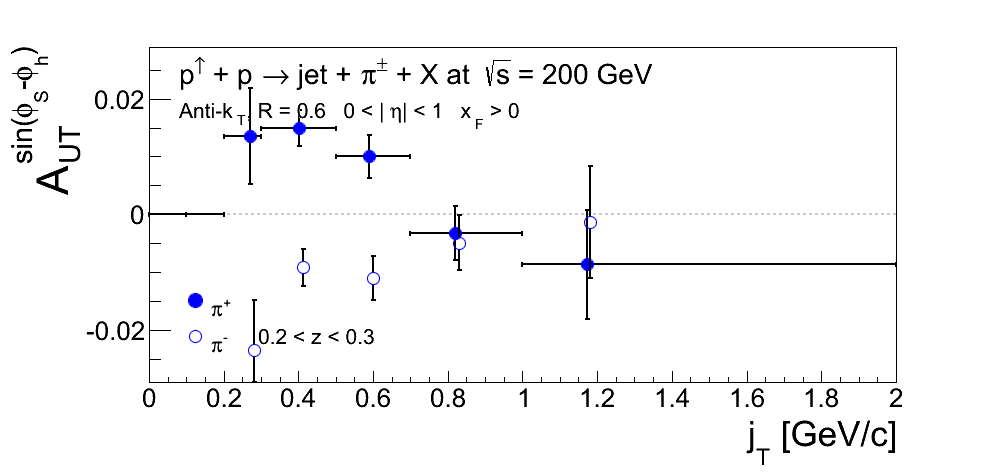
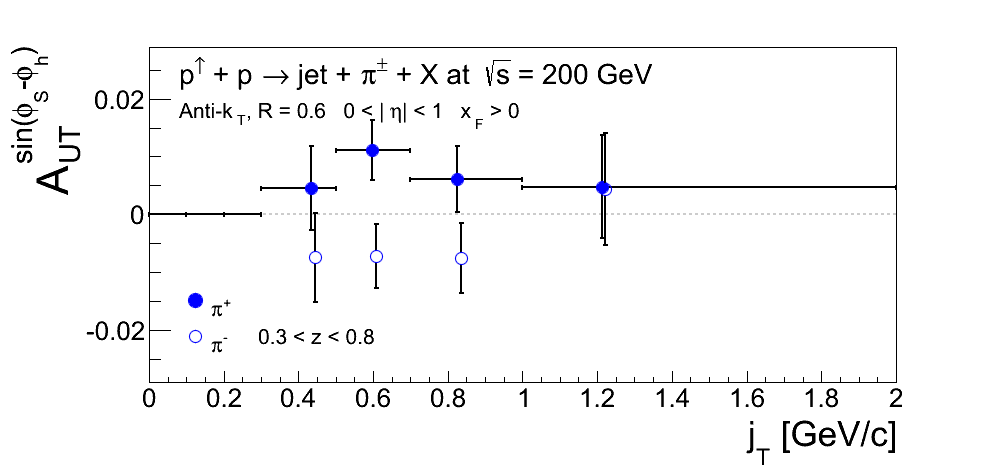
In Fig. 4 I show the asymmetries as a function of jT in different windows of z. There appears to be something of an interesting jT dependence present. It appears consistent with a 1/jT-dependence. Such a fit for the 0.1 < z < 0.8 bin returns
for π+
Chi2 = 6.03665 NDf = 5 EXT PARAMETER STEP FIRST NO. NAME VALUE ERROR SIZE DERIVATIVE 1 p0 2.60737e-03 3.12981e-04 3.00000e-06 -1.54922e-09
for π-
Chi2 = 10.3829 NDf = 5 EXT PARAMETER STEP FIRST NO. NAME VALUE ERROR SIZE DERIVATIVE 1 p0 -1.97587e-03 3.33053e-04 5.48669e-07 9.79204e-05
Again, the dependence is consistent with equal magnitude (within 1.4σ) and opposite sign for π+ and π-.
Figure 5
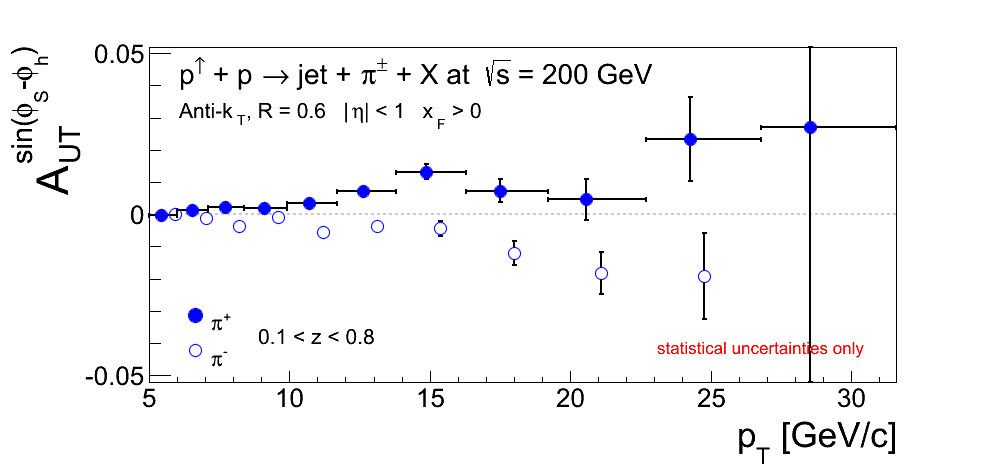
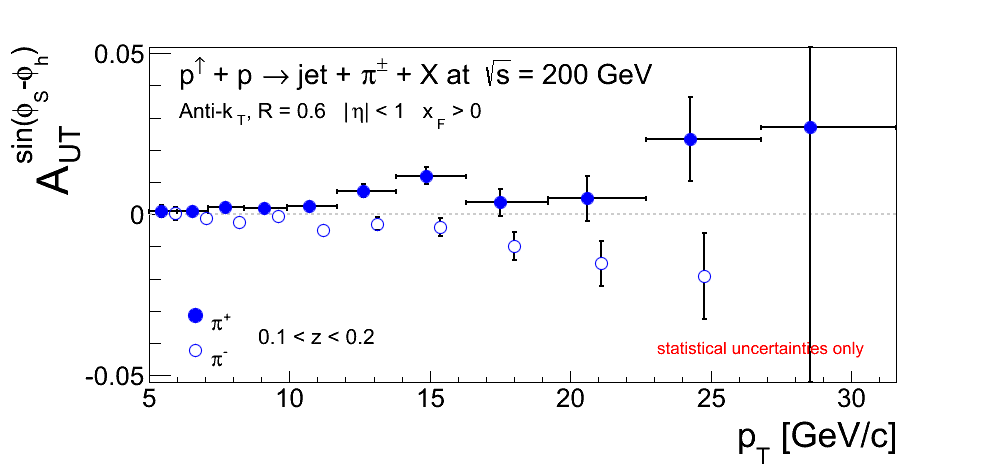
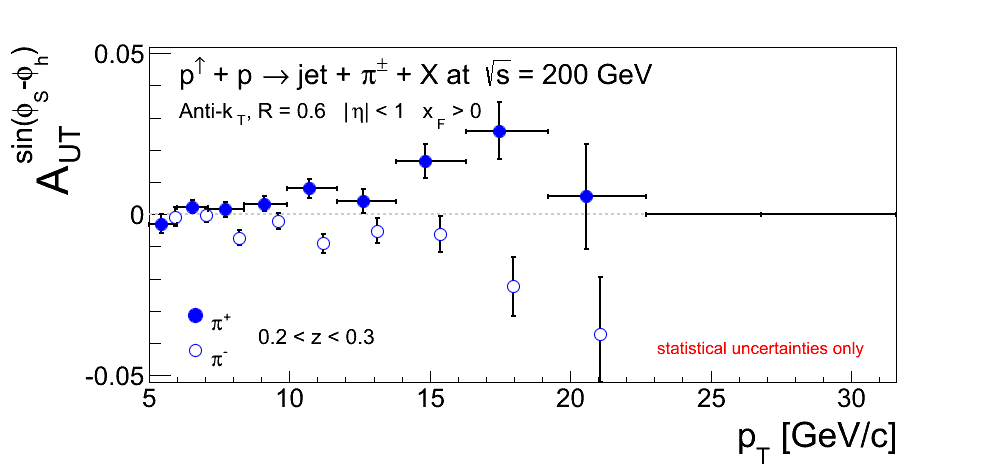
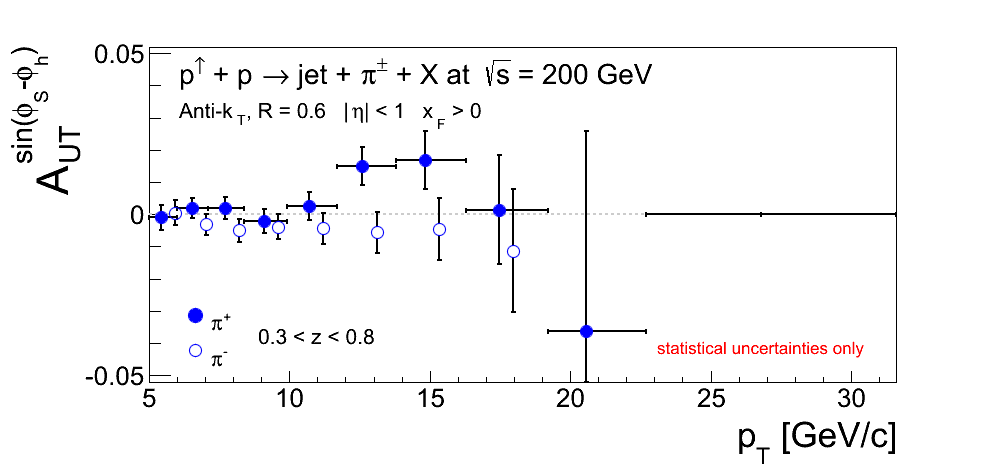
In Fig. 5 I show the pT-dependence for different windows of z. The asymmetries tend to grow with pT, at least, to a certain point. This seems consistent with the expectation that the low-pT range involves more gluonic subprocesses.
Collins-like Asymmetries
As a reminder, I focus on the lower range of pT < 9.9 GeV/c for the Collins-like asymmetry, which is a gluonic effect.
Figure 6
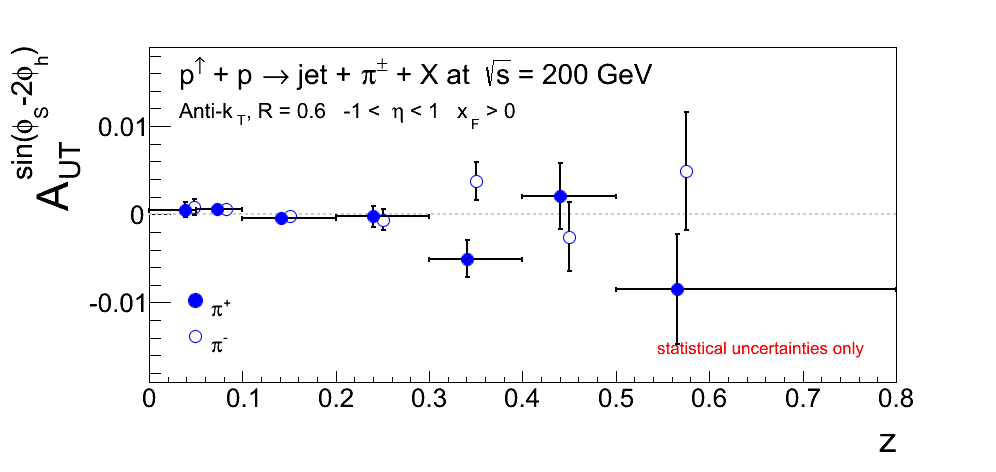
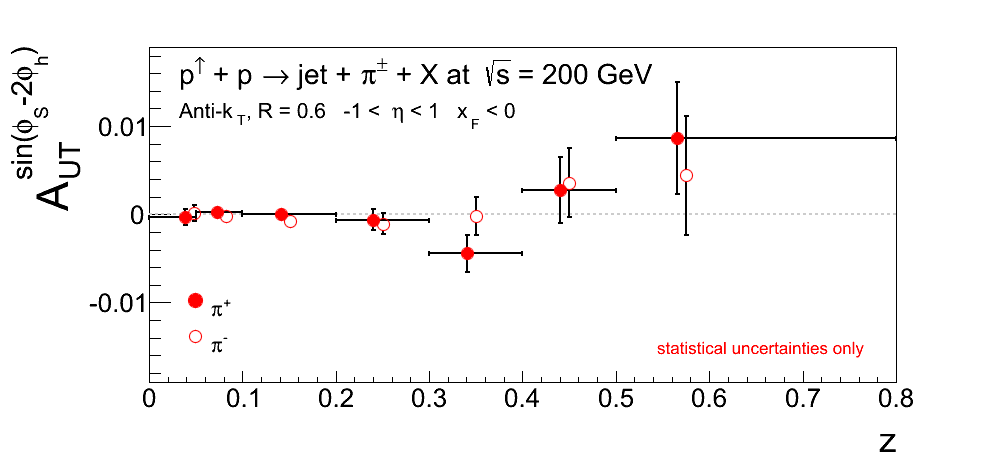
The Collins-like moment is quite tiny in both forward and backward scattering.
Sivers Asymmetries
Figure 7
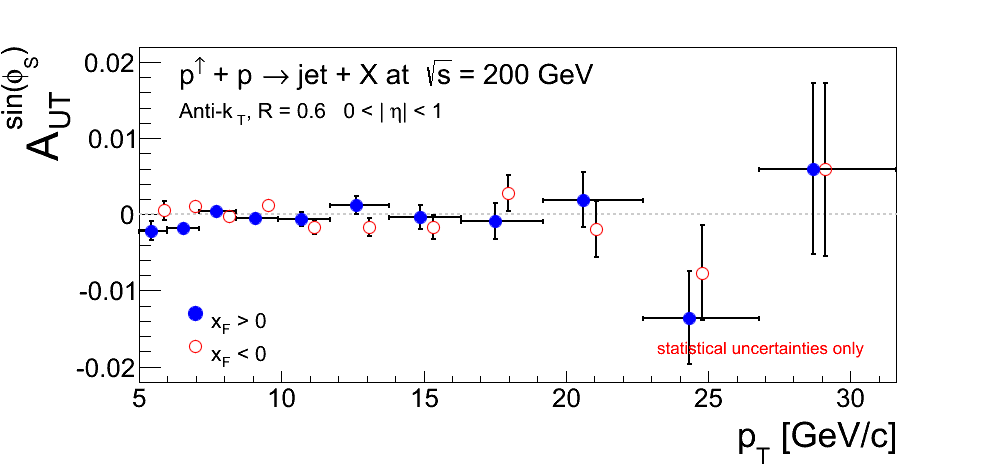
Figure 8
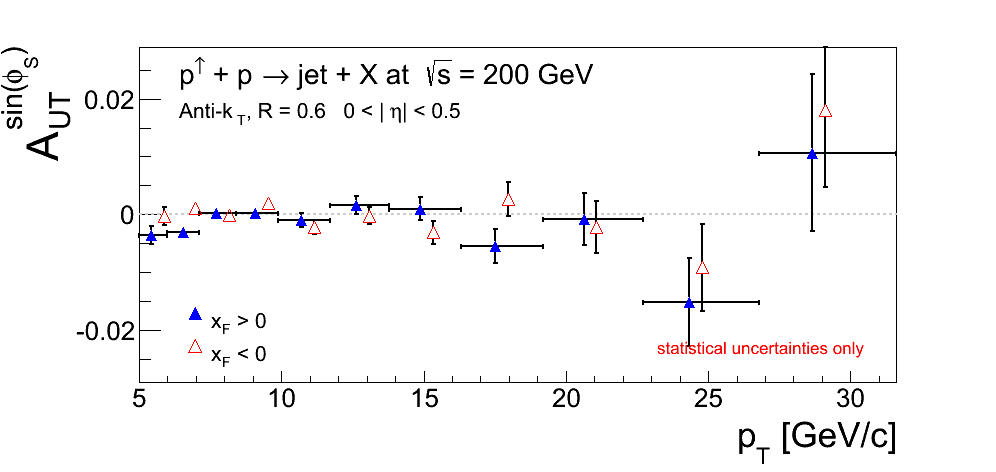
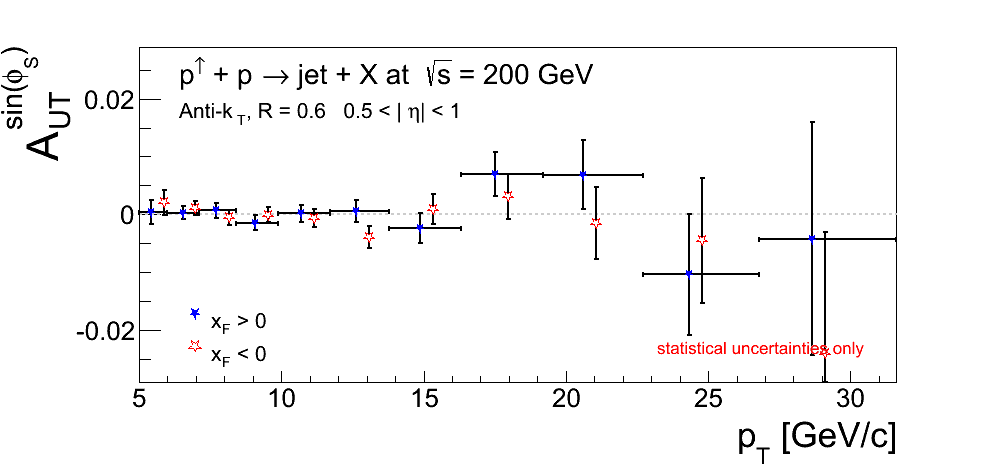
The Sivers moment is, again, quite tiny in both forward and backward scattering. Generally, the recent twist-3 prediction expects the Sivers asymmetry to increase going from forward to backward scattering (a bit counter-intuitive to me). It is difficult to say we observe this in any of the results.
- drach09's blog
- Login or register to post comments
